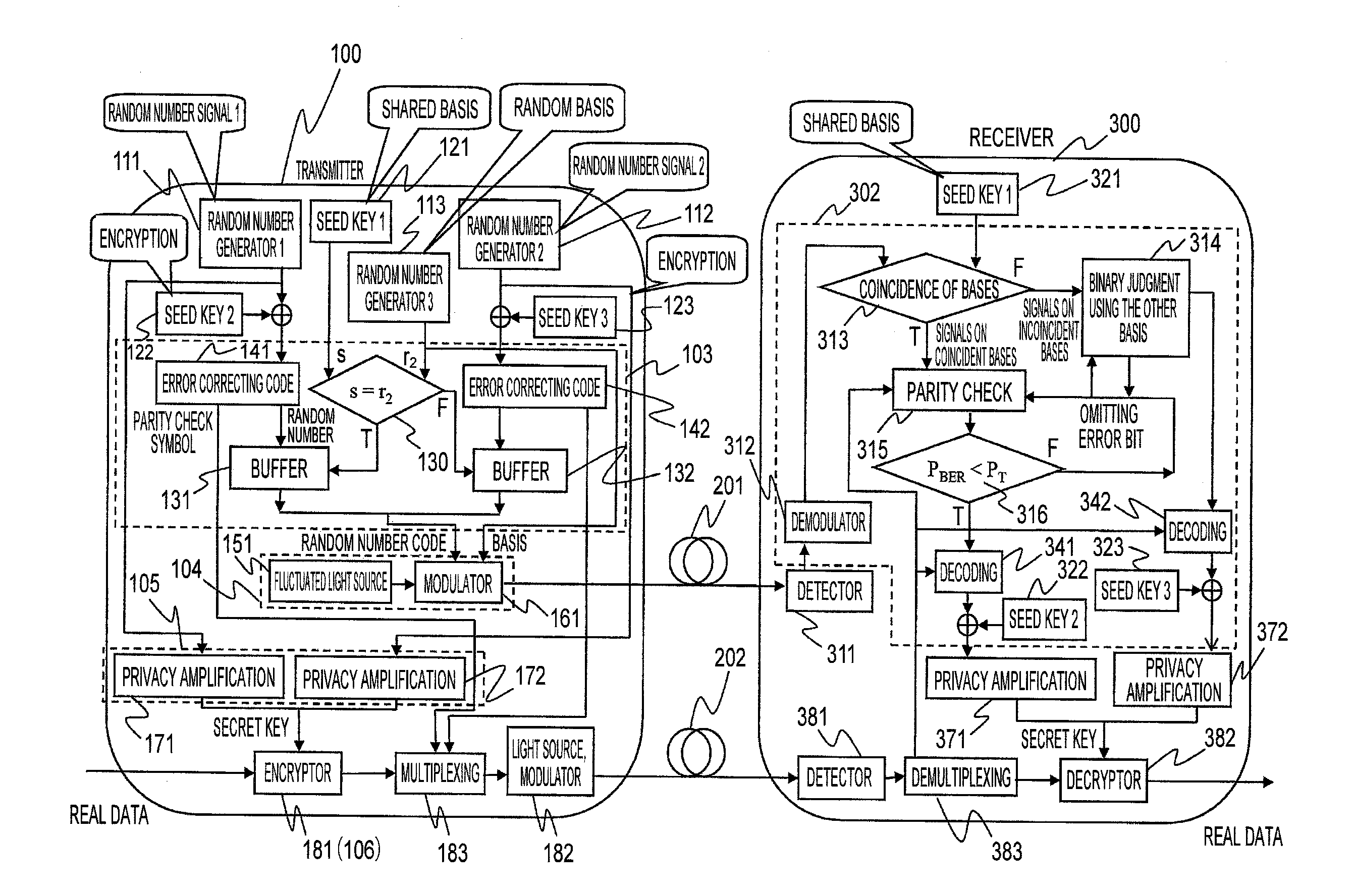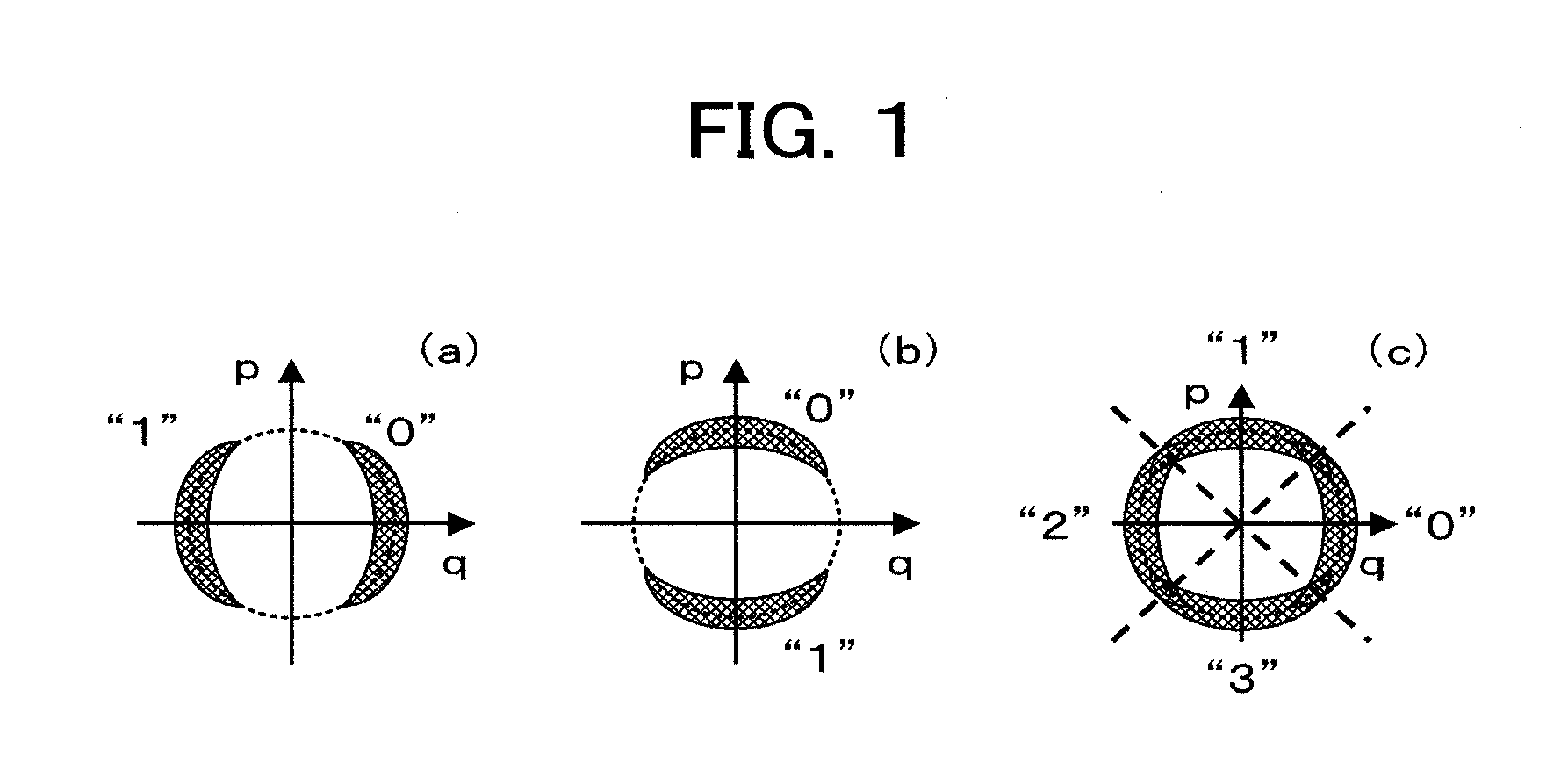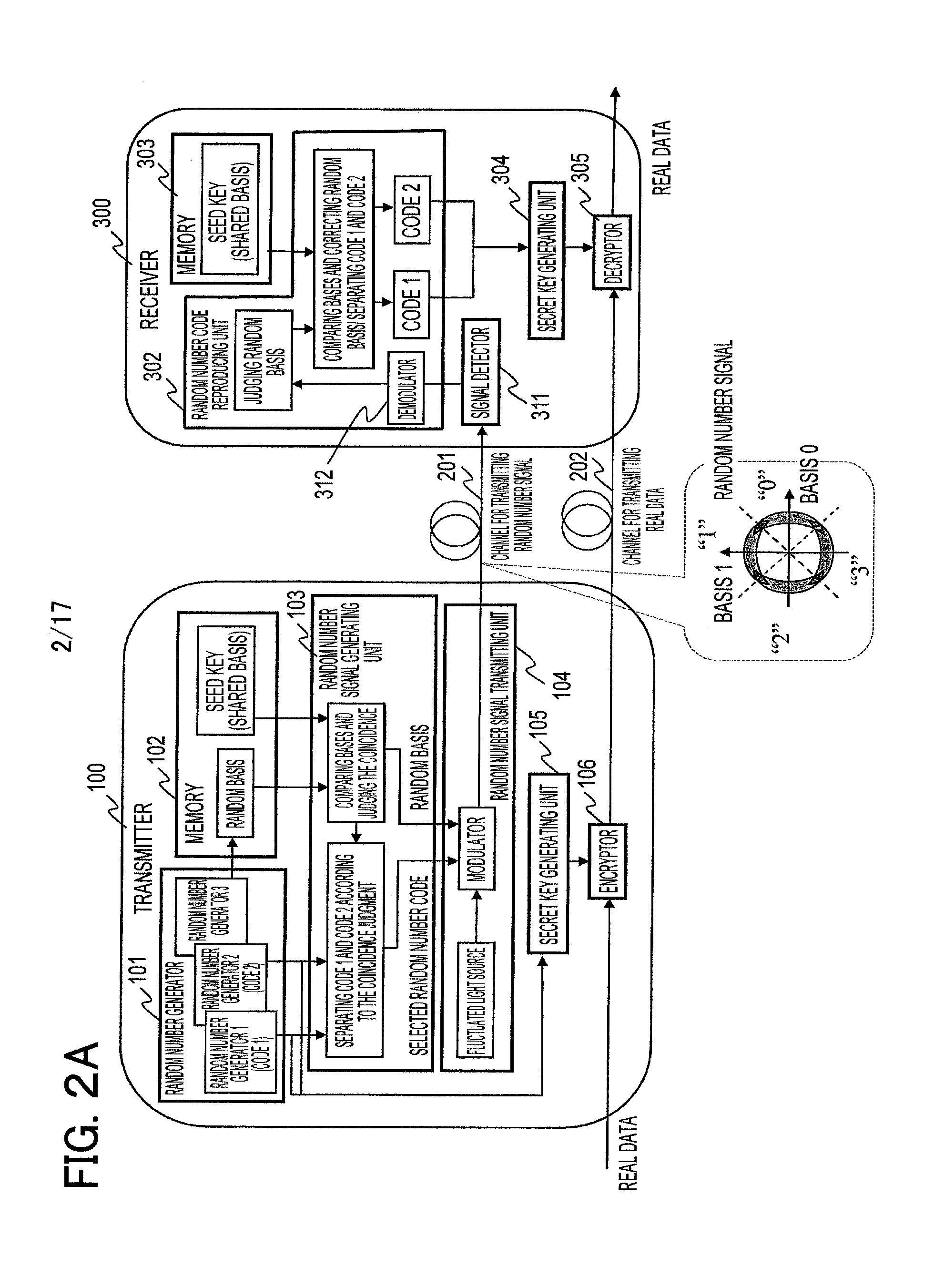Encrypted communication system, transmitter and receiver using same
- Summary
- Abstract
- Description
- Claims
- Application Information
AI Technical Summary
Benefits of technology
Problems solved by technology
Method used
Image
Examples
first embodiment
[0093]When the bases and signals are of true random numbers, an illegal receiver sees only completely random number strings. FIG. 3 shows an example of the configuration for a cryptographic communication system according to the present invention. The transmitter 100 includes three random number generators 1, 2, and 3 (111, 112, and 113) and three kinds of seed keys 1, 2, and 3 (121, 122, and 123) that consist of random numbers. The random number generator 101 in FIG. 2A includes those three random number generators, and the memory 102 in FIG. 2A stores those seed keys. The three random number generators and three kinds of the seed keys respectively may be constructed from one random number generator and one seed key, where the output from one random number generator is divided into three and one seed key is divided into three. The outputs from the random number generators 1 (111) and 2 (112) are random numbers that will be used for generating a secret key. They are encrypted using s...
second embodiment
[0125]Next, a second embodiment improving a portion of the first embodiment will be described.
[0126]In the first embodiment, information symbols part and parity check symbols part are separated from each other in error correcting coding at encoders 141 and 142, and the former that is random number code is transmitted via optical channel 201 and the latter is transmitted via optical channel 202. Because the communication via optical channel 202 is general one, the bit error rate is low and the check symbols definitely reaches the receiver. This is advantageous. Furthermore, signals transmitted via optical channel 201 are completely random numbers. This is also advantageous. However, there are some kinds of error-correcting codes that cannot separate information symbols and the check symbols. In this case, it is preferable to transmit both of the information symbols and the check symbols via optical channel 201.
[0127]FIG. 8 is a block diagram showing an embodiment for this case, that ...
third embodiment
[0133]Next, a third embodiment improving portions of functions of the first and second embodiments will be described with reference to FIGS. 10 to 13.
[0134]In the first and second embodiments, the random basis and the shared basis are compared with each other as a pair to decide which one of random number codes 1 and 2 is transmitted. Extracting the shared bases from the random bases can be achieved by other methods than what the first and second embodiments employ. FIGS. 10 and 12 show examples of the configuration for a cryptographic communication system that employs the other methods. FIG. 10 shows a first type of the third embodiment improving the first embodiment (FIG. 3) and FIG. 12 shows a second type of the third embodiment improving the second embodiment (FIG. 8).
[0135]The present embodiment (first and second methods) are the same as the first and second embodiments in the fact that which one of random number codes 1 and 2 is transmitted is decided through comparing the sha...
PUM
 Login to View More
Login to View More Abstract
Description
Claims
Application Information
 Login to View More
Login to View More - R&D
- Intellectual Property
- Life Sciences
- Materials
- Tech Scout
- Unparalleled Data Quality
- Higher Quality Content
- 60% Fewer Hallucinations
Browse by: Latest US Patents, China's latest patents, Technical Efficacy Thesaurus, Application Domain, Technology Topic, Popular Technical Reports.
© 2025 PatSnap. All rights reserved.Legal|Privacy policy|Modern Slavery Act Transparency Statement|Sitemap|About US| Contact US: help@patsnap.com



